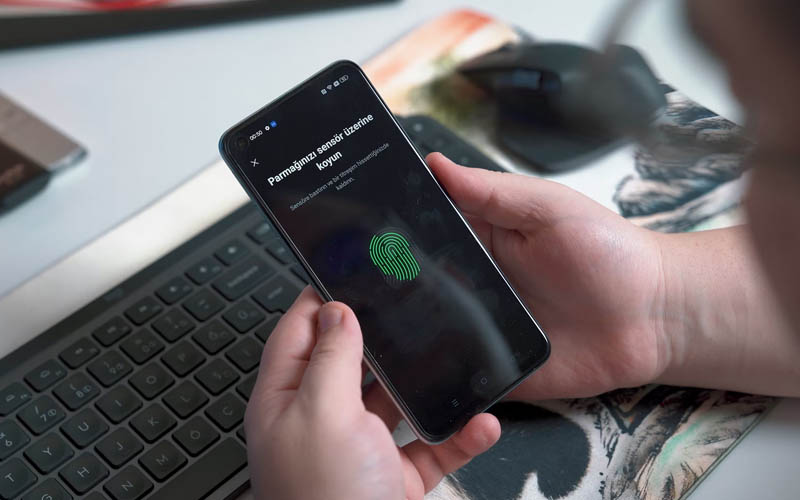Your smartphone, tablet, or laptop is a treasure trove of personal and professional information. From sensitive emails to bank details and cherished photos, these devices hold it all. But think for a moment—what happens if someone else gains access to this information? A secure lock screen stands as the first line of defense, guarding your digital life from prying eyes.
This blog dives into the importance of lock screen security, how to choose the best option for your needs, practical tips to enhance device protection, and a glimpse into the future of lock screen technology.
Why Secure Lock Screens Matter
The Increasing Threat of Cybersecurity Risks
Cyber threats are evolving, with new methods of infiltrating personal devices emerging every day. According to a report from Verizon in 2023, 74% of cyberattacks involved compromises in device security, often due to weak or nonexistent lock screens. Leaving your device unlocked practically invites data breaches, where sensitive information can be stolen or compromised within seconds.
Real-Life Lessons From Breaches
Consider this real-world scenario. A company executive loses their unlocked smartphone during travel. Within hours, cybercriminals gain access to company financial reports, proprietary product details, and even private employee data. This breach wasn’t due to advanced hacking—simply a carelessly unsecured device.
For individuals, unlocked devices can mean identity theft, unnecessary financial losses, or even the leak of private photos. Prevention starts with something as simple as enabling an effective lock screen.
How to Choose the Best Lock Screen Option
Selecting the perfect lock screen method depends on your needs for security, convenience, and compatibility. Here’s a breakdown of popular options to help you decide.
Traditional Lock Screens
- PIN Codes
- Great for simplicity and speed.
- Recommended to be at least six digits, avoiding obvious patterns like “123456” or birth dates.
- Passwords
- Highly secure but can be cumbersome to type repeatedly. Mixing uppercase, lowercase, numbers, and special characters enhances safety.
- Pattern Locks
- Seen on many Android devices, quick to use but vulnerable if you leave visible trace marks on your screen.
Biometric Security Options
- Fingerprint Recognition
- Fast and accurate, but keep in mind it may not work well in wet or dirty conditions. This method is widely regarded as one of the most secure.
- Facial Recognition
- Modern facial recognition is highly sophisticated, although some systems can still falter under poor lighting or when faced with identical twins.
Multi-Factor Authentication (MFA)
For the ultimate protection, consider combining a primary lock (e.g., PIN) with additional authentication layers. MFA methods include receiving verification codes on a secondary device or using hardware security keys.
Tips for Setting Up and Using Lock Screens Securely
Even strong lock screens can fall short if not used properly. Follow these tips to ensure your lock screen remains effective.
Create Strong, Unique Passwords
- Avoid easy-to-guess PINs like “1111” or common words such as “password.”
- Consider passphrases—short sentences or phrases that are easy to remember but difficult to hack (e.g., “Coffee@5am!”).
Enable Two-Step Verification
Many devices and apps allow two-step verification. This adds another layer of security by requiring you to enter a code sent to your phone or email after entering your password or PIN.
Regularly Update Your Lock Screen Settings
- Change passwords frequently to minimize risks.
- Stay informed about software updates, as they often include crucial security patches.
Disable Lock Screen Notifications
Notifications visible on lock screens might display sensitive information. Disable or limit them in your settings to ensure data privacy.
The Future of Lock Screens and Security
Technology is advancing rapidly, and with it comes innovations in lock screen technology designed to make devices both smarter and more secure.
Advanced Biometrics
Biometric systems are becoming more sophisticated, incorporating even iris scans and voice recognition. These methods aim to improve integrity while removing inconveniences like wet fingerprint scans.
AI-Powered Security
AI promises adaptive security systems capable of responding to unusual access attempts in real-time, such as suspicious login locations.
Balancing Convenience and Security
Future lock screens will focus on maintaining high-end protection without hampering user convenience. For instance, wearable technology may soon unlock devices automatically as long as it’s in proximity to the owner.
Secure Your Devices Today
A secure lock screen isn’t a luxury—it’s essential. It protects your personal and professional life from unwanted intrusion, keeps sensitive data safe, and simplifies your peace of mind.
Take a moment today to assess your current lock screen setup. Is it as secure as it could be? If not, consider upgrading your protection by using the tips we’ve shared or exploring advanced technologies.
Remember, your privacy starts with that small lock icon on your screen—make sure it’s strong enough to hold.


